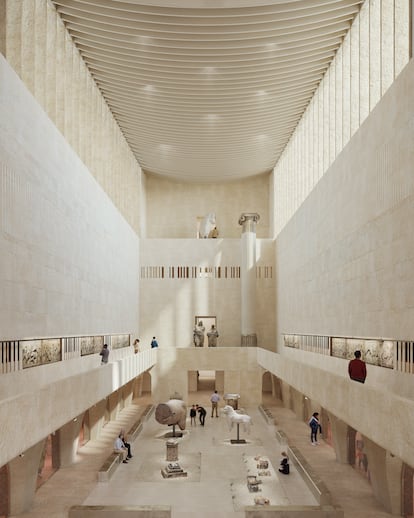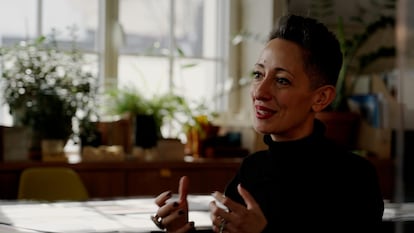The British Museum extension: from neutrality to tact

The British have ensured that one of the world’s greatest cultural transformations in the coming years will take place in London. How? By extending, and altering the character of, their flagship, the British Museum . The Lebanese architect based in Paris, Lina Ghotmeh, has won—against 60 applicants and 5 finalists—the competition to redesign the west wing of the building. The keys? Her sensitivity. To address the complexity of collections whose origin is not always clear, the architect and her team have proposed mixing archaeology with architecture. The result is an open place, an archaeological site that investigates anew, abandoning the neutrality—of Norman Foster’s extension —and the grandiloquence of the original neoclassical building by Robert Smirke. Thus, Ghotmeh approaches the examination of history from beauty and humility. In her new building, textures will take the place of the old definition, doubt will replace rotundity and natural materials will deepen the feeling of discovery and respect for what happened millions of years ago. The designer will thus approach with humility what the human being and his history have been.
The archaeological site, the place of discovery and celebration, has been the space from which Ghotmeh has wanted to re-examine the function of the museum. Far from the mausoleum, the temple of knowledge, the place of the muses or the display of power, this extension proposes to rethink the nature of the museum institution. Not from a minimalist subtraction, but rather from an honest social, serene, historical and human rethinking of the arts. Paradoxically, an archaeological site allows us to re-imagine the past and, precisely for that reason, also the future of what has been found. Thus, rethinking the meaning of sculptures, objects and achievements from two million years of human history becomes a back-and-forth lesson.

Based in Paris, Ghotmeh designed the National Museum in Tartu, Estonia , in 2016. Two years ago, her studio designed the workshops of the Hermès house in Louviers, Normandy, recovering, in architecture, the craftsmanship that the company boasts. On this occasion, the president of the jury, George Osborne, declared that in Ghotmeh they had found an architect who combines a deep sensitivity for the history of her collection and a voice for the future. “We know that her galleries and buildings will excite our millions of visitors,” he said. Why? Because the surprise of two centuries ago, due to the seriousness and grandiloquence of the treatment, the new project embraces a new familiarity, closeness and humility, while maintaining the same surprise. The director of the museum, Nicholas Cullinam, highlighted the material sensitivity of the architect and the architectural transformation hand in hand with intellectual transformation.

The architect, for her part, spoke of dialogue. Of rethinking spaces based on connections with the world. Her philosophy “an archaeology of the future” highlights the responsibility of what is built. Beyond the awards received during her career – the Dezeen for her Stone Garden in Beirut, in 2022 , or the Serpentine pavilion in 2023 – her Workshops for Hermès were her first positive building – capable not only of replenishing energy consumption, but of accumulating energy. A professor at the Harvard School of Architecture, in Toronto and at Yale, Ghotmeh will also be responsible for the AIUIA Museum of Contemporary Art in Saudi Arabia in the coming years.
EL PAÍS





